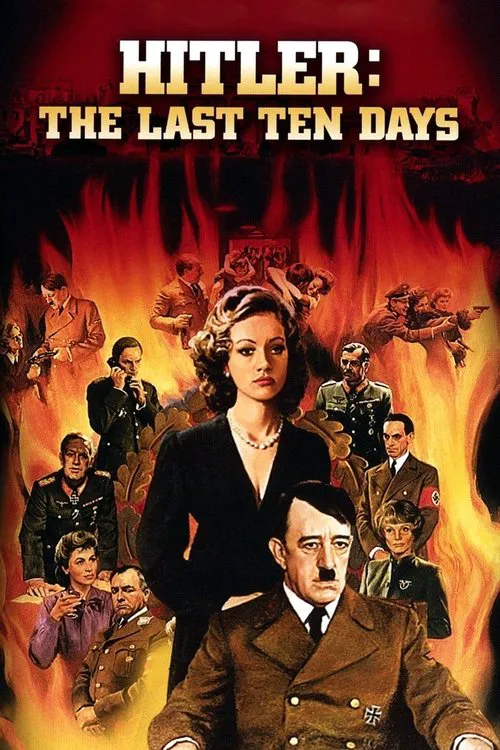Hitler: The Last Ten Days

Trama
As the Allied forces advance on Germany, Adolf Hitler becomes increasingly isolated within the confines of his Berlin bunker. The year is 1945, and the Third Reich is crumbling around him. 'Hitler: The Last Ten Days' brings to life the final weeks of the Nazi dictator, offering a gripping and unflinching look at the events that transpired within the bunker and without. The film is based on the book by Gerhard Boldt, a German historian who provides a detailed and unvarnished account of the bunker's inner workings during the war's final stages. With a focus on the last ten days of Hitler's life, the movie delves into the desperate attempts by Germany's leaders to salvage what's left of the war effort, even as the Allies close in on the capital. As the story begins, Hitler is shown struggling with the consequences of his own actions. His military strategists have informed him that the war is lost, but he refuses to accept the reality of the situation. Instead, he clings to the notion that the German army can still turn the tide and emerge victorious. This obstinacy drives many of the characters in the film, as they navigate the treacherous landscape of Hitler's delusions. Among the characters who populate the bunker is General Wilhelm Keitel, Hitler's loyal but increasingly disaffected chief of staff. Keitel is shown growing more and more frustrated with his leader's decisions, which he knows are doomed to failure. The general is played by actor Curd Jürgens, a stalwart of German film who brings gravity and empathy to his portrayal. Another key figure in the bunker is Martin Bormann, Hitler's chief of staff. Bormann is portrayed as a Machiavellian manipulator, using his cunning and intelligence to further his own interests. The character of Bormann is played by Richard Münch, an accomplished German actor who brings a sense of menace and intensity to the role. Among the women who inhabit the bunker is Eva Braun, Hitler's long-time mistress and companion. Eva, played by Adrienne Corri, is a symbol of Hitler's vulnerability and humanity. Despite her loyalty to the Führer, she is shown to be increasingly concerned about the consequences of his actions and the fate that awaits them both. As the film progresses, the stakes are raised, and the claustrophobia of the bunker becomes almost unbearable. With food and medicine running low, the occupants of the bunker begin to turn on each other. The atmosphere is tense and foreboding, with an undercurrent of despair and hopelessness. Meanwhile, outside the bunker, the war rages on. Berlin is pounded by Allied bombers, and the Red Army closes in. The Soviet soldiers are shown to be brutal and unsparing, as they push into the city, intent on capturing the German capital. Despite the chaos and destruction outside, the characters within the bunker remain resolute in their determination to cling to the fading glories of the Third Reich. In the end, it is this fanaticism that proves their undoing, as Hitler refuses to accept defeat and the reality of his own mortality. The film's climax is both stark and harrowing. On April 30, 1945, as the Red Army storms the bunker, Hitler takes his own life along with Braun. Their bodies are carried outside, where they are buried in a secret grave. The final scenes are a stark reminder of the costs of war and the devastating human toll of Hitler's ambition. 'Hitler: The Last Ten Days' is a gripping and powerful film that offers an unflinching look at the final weeks of the Third Reich. The movie's attention to historical detail is meticulous, and the performances is outstanding. With a focus on the bunker's inner workings, the film provides a unique perspective on one of the most pivotal moments in modern history.
Reseñas
Recomendaciones




